Planning to paint your walls after plastering but not sure where to start?
Choosing the right type of paint is crucial for a successful and long-lasting finish.
We discuss why you need to paint after plastering, the best type of paint to use, the different types of paints available, best practices for painting after plastering, common mistakes to avoid, and how to maintain and care for painted walls.
Get expert tips and advice to achieve a flawless finish for your walls.
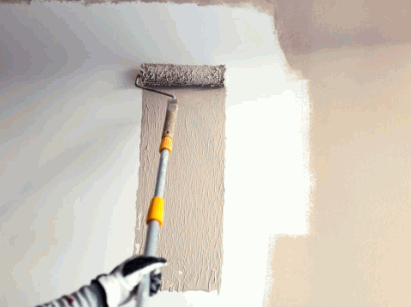
Why Do You Need To Paint After Plastering?
Painting after plastering is essential to protect the newly installed plaster and to enhance the aesthetic appeal of the walls, whether for interior or exterior surfaces. It serves as a protective layer that seals the plaster surface from moisture, dust, and damage, ensuring its longevity and durability.
Painting plays a crucial role in maintaining the structural integrity of the walls by acting as a barrier against environmental elements and normal wear and tear. The choice of paint color and finish also contributes to the overall ambiance of the room or building, allowing for customization and personalization.
By regularly painting post-plastering, homeowners can stay ahead of potential issues such as mold growth or cracks, thus preserving the beauty and condition of their walls for years to come.
Learn more: Difference Between Plastering And Skim Coat
What Type Of Paint Should You Use After Plastering?
Choosing the right type of paint after plastering is crucial to achieve the desired finish and durability, whether for interior or exterior applications. The selection of paint type should consider factors such as the surface area, desired sheen, and environmental conditions to ensure optimal results.
Interior paints are typically formulated for specific indoor surfaces, providing features like washability for easy maintenance in high-traffic areas.
On the other hand, exterior paints are designed to withstand harsh weather conditions, preventing fading and peeling.
Selecting a paint with the appropriate sheen level can impact the overall aesthetics of the space; matte finishes hide imperfections while glossy finishes add a reflective quality.
Paying attention to these details not only enhances the visual appeal but also extends the lifespan of the painted surfaces.
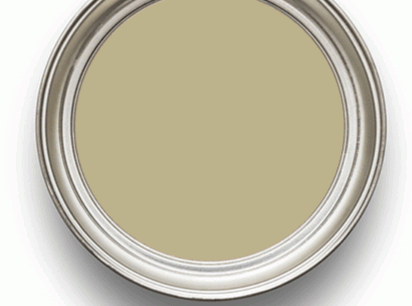
What Are The Different Types Of Paints Available?
Various types of paints are available for post-plastering applications, catering to different needs for interior and exterior surfaces. Common options include latex, acrylic, PVA, oil-based, and water-based paints, each offering unique characteristics and benefits.
Latex paint, known for its durability and washability, is a popular choice for interior walls due to its quick drying time and low odor.
Acrylic paint, on the other hand, is versatile and ideal for both interior and exterior applications, offering excellent adhesion and color retention.
PVA paint, with its high bonding strength, is often preferred for priming new plaster surfaces.
Oil-based paints are prized for their rich finish and durability, making them suitable for exterior trim and doors.
Water-based paints, being eco-friendly and quick-drying, are ideal for interior walls and ceilings.
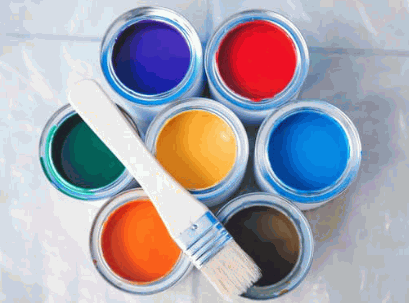
What Are The Pros And Cons Of Using Each Type Of Paint?
Each type of paint, whether it be latex, acrylic, PVA, oil-based, or water-based, comes with its own set of advantages and limitations for interior and exterior painting projects. Understanding the pros and cons of each paint type is essential for making an informed decision based on the specific requirements of the surface.
Latex paint, known for its durability and ease of cleaning, is a popular choice for indoor walls with its quick-drying properties and resistance to mildew. Its downside includes a less smooth finish compared to other types.
Acrylic paint, on the other hand, offers excellent adhesion and color retention, making it suitable for both indoor and outdoor use. Nevertheless, it may require additional coats for proper coverage.
PVA paint, commonly used for priming, provides a cost-effective option but lacks the durability needed for long-term exterior applications.
Oil-based paints deliver a glossy finish and superior adhesion, perfect for trim work and exteriors yet have a longer drying time and emit strong odors during application.
Water-based paints, environmentally friendly and easy to clean up with soap and water, are ideal for interior surfaces due to their low odor and quick drying time, but they may not withstand harsh weather conditions outdoors as effectively as oil-based alternatives.
When choosing the right paint type, it’s crucial to consider factors such as durability, coverage, drying time, finish, and environmental impact to achieve the desired results for any painting project.
What Are The Best Practices For Painting After Plastering?
Implementing best practices when painting after plastering is crucial to achieving a flawless finish and ensuring long-lasting results. Proper surface preparation, meticulous application techniques, and following expert tips can significantly enhance the overall quality and durability of the painted surface.
Thoroughly inspecting the plastered surface to address any imperfections, such as cracks or uneven areas, before commencing painting is vital. Utilizing high-quality primers and paints suited for newly plastered surfaces can improve adhesion and prevent issues like peeling or bubbling.
When applying paint, consider using roller brushes for even coverage and minimizing streaks. Ensuring proper ventilation during the painting process aids in drying and prevents odors from lingering. These expert recommendations and techniques can lead to a professional-looking finish that stands the test of time.
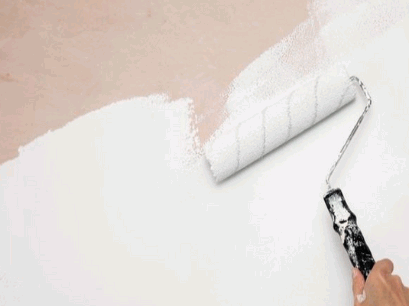
How To Prepare The Surface For Painting?
Preparing the surface before painting post-plastering is a critical step that involves cleaning, patching, and priming to ensure proper adhesion and a smooth finish. Essential tools and supplies such as rollers, brushes, and sealers are utilized to adequately prepare the surface for the application of paint.
When it comes to surface priming, choosing the right primer based on the type of surface being painted is essential. For instance, an oil-based primer works best for blocking stains and tannins, while a water-based primer is ideal for new drywall. In addition to the tools mentioned, sandpaper or sanding blocks are also crucial for smoothing out rough patches and ensuring a uniform surface. These tools, when used in conjunction with proper cleaning and patching techniques, lay the foundation for a successful paint job.
What Tools And Materials Do You Need For Painting?
The successful painting of surfaces post-plastering requires the use of appropriate tools and materials such as brushes, rollers, sprayers, and quality paints. Ensuring the right application tools and supplies are utilized is essential for achieving the desired coverage, finish, and durability on the painted surface.
- Quality brushes play a key role in achieving smooth and even paint application, while rollers are ideal for covering larger areas efficiently.
- Sprayers offer a fast and uniform coat of paint on surfaces with intricate details.
Choosing high-quality paints not only enhances the aesthetic appeal but also ensures long-lasting protection. Using appropriate primers and sealers can further enhance the adhesion and longevity of the paint.
Properly preparing the surface before painting and maintaining a clean workspace are equally vital for a successful painting project.
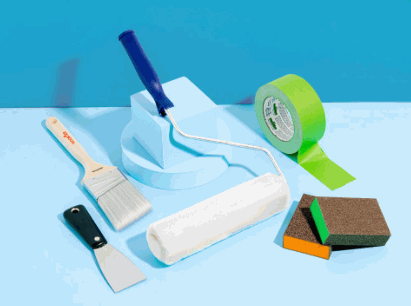
What Are The Steps For Painting After Plastering?
Following a systematic approach is key when painting after plastering, involving steps such as priming, applying topcoat, and ensuring proper drying time between layers. Understanding the sequential process of painting post-plastering is essential for achieving a professional finish and long-term durability.
Begin by preparing the surface post-plastering by ensuring it is clean, dry, and free from any debris. Next, apply a high-quality primer to promote adhesion and create a smooth base for the topcoat. Once the primer has dried, carefully apply the topcoat using even strokes to achieve a uniform coverage. Allow each layer to dry completely before applying the next to prevent streaks or uneven texture. Patience during the drying process is crucial to ensure the paint sets properly and delivers a flawless final appearance.
What Are The Common Mistakes To Avoid When Painting After Plastering?
Avoiding common painting mistakes post-plastering is crucial to prevent issues such as improper adhesion, uneven finish, and premature wear. Common errors include using the wrong paint type, inadequate surface preparation, and improper tools and techniques, which can compromise the quality and longevity of the painted surface.
Paint type mismatch is a frequent misstep that results in poor adhesion and peeling. Similarly, insufficiently prepped surfaces lead to paint failure. Employing incorrect tools or techniques, like using a roller on a textured surface, can create inconsistency. These errors not only affect the visual appeal but also reduce the surface’s resilience.
Addressing these issues through proper repair techniques and regular surface maintenance enhances the durability and aesthetics of the painted area.
Using The Wrong Type Of Paint
Selecting the wrong type of paint for post-plastering applications can lead to adhesion issues, poor finish, and reduced durability. Using incompatible paint varieties on freshly plastered surfaces may necessitate repairs and reapplication to rectify the damage caused by improper paint selection.
This kind of mismatch can result in the new paint not properly bonding with the plaster, leading to bubbling, peeling, or flaking over time. Using inappropriate paint can affect the overall appearance of the surface, causing discoloration or uneven textures. In the long run, the structural integrity of the surface can also be compromised, making it more susceptible to wear and tear.
To rectify such issues, thorough surface preparation, including sanding and priming, is essential before applying compatible paint to ensure a lasting and visually appealing finish.
Not Preparing The Surface Properly
Neglecting proper surface preparation before painting post-plastering can result in adhesion failure, patchy finishes, and reduced paint longevity. Thoroughly cleaning, repairing, and priming the plastered surface is essential to ensure optimal paint adhesion and a smooth, uniform coat.
This critical step cannot be underestimated as failure to adequately prepare the surface before painting can lead to significant consequences. Poor adhesion jeopardizes the longevity of the paint job, causing it to peel or chip prematurely. Inconsistencies in the finish can detract from the overall aesthetic appeal of the painted surface. Without proper priming, the paint may not adhere evenly, resulting in an uneven application and compromised durability over time.
By meticulously cleaning, repairing any imperfections, and applying a suitable primer, you create the ideal foundation for a successful and long-lasting paint finish.
Not Using The Right Tools And Techniques
Utilizing incorrect tools and techniques during painting post-plastering can lead to uneven coverage, subpar finish, and reduced paint durability. Employing the right brushes, rollers, and application methods is crucial for achieving a professional look and ensuring the longevity of the painted surface.
- When selecting brushes for painting on plastered surfaces, opt for high-quality synthetic bristle brushes that are suitable for the type of paint being used.
- Rollers with the appropriate nap, such as 3/8-inch nap rollers for smooth surfaces and 1/2-inch nap rollers for textured walls, can ensure even paint distribution.
- Proper application techniques like using consistent pressure and maintaining a wet edge while painting can help prevent lap marks and achieve a seamless finish.
By following these guidelines, you can avoid the pitfalls of improper tools and techniques, resulting in a beautifully painted surface that stands the test of time.
How To Maintain And Care For Painted Walls After Plastering?
Proper maintenance and care of painted walls post-plastering are essential to preserve the finish, protect against damage, and extend the longevity of the paint. Regular cleaning, prompt repairs of any damages, and appropriate protective measures help maintain the aesthetic appeal and durability of the painted surfaces.
It is crucial to establish a routine cleaning schedule to remove dust, dirt, and stains that can accumulate over time, as these can deteriorate the paint quality.
Quick response to any scratches, dents, or peeling paint through timely repairs prevents further deterioration and ensures the integrity of the surface.
Employing protective measures such as using furniture pads, avoiding harsh cleaning agents, and maintaining proper humidity levels in the room are imperative in safeguarding the painted walls from wear and tear.
How To Clean Painted Walls?
Regularly cleaning painted walls after plastering is crucial to remove dust, dirt, and stains that can detract from the appearance and longevity of the paint. Using mild cleaning solutions, soft cloths, and gentle techniques ensures effective cleaning without causing damage to the painted surface.
This maintenance practice not only enhances the aesthetic appeal of your walls but also preserves the paint’s integrity over time. By incorporating these care techniques into your routine, you can prevent debris buildup, maintain a fresh look, and extend the lifespan of the painted surface.
Remember to approach cleaning with a delicate touch to avoid scratches or discoloration. Consistency in cleaning will contribute significantly to the overall upkeep of your walls, creating a welcoming and well-maintained living space.
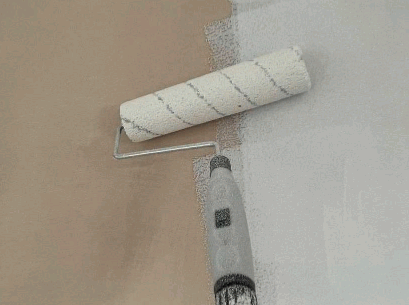
How To Prevent Peeling And Cracking?
Preventing peeling and cracking of painted walls post-plastering involves proper surface preparation, quality paint application, and prompt repair of any damages. Ensuring the surface is clean, dry, and free of defects before painting, using high-quality paints, and addressing any signs of peeling or cracking promptly can help maintain the integrity of the paint.
A crucial step in preventing these common paint problems is a thorough cleaning of the wall surface to remove dust, debris, and any residues that could affect paint adhesion. Priming the surface with a high-quality primer specifically designed for plastered walls further enhances paint bonding. Opting for premium paints with better adhesion properties and durability helps in creating a long-lasting finish. Should peeling or cracking appear, quick action to repair the damaged areas using suitable techniques is vital to prevent further deterioration of the paint job.
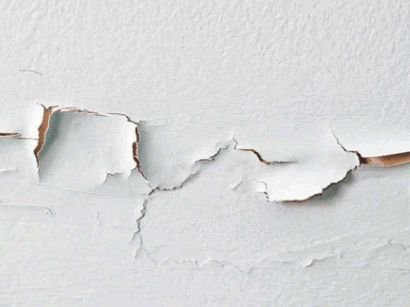
How Often Should You Repaint After Plastering?
Determining the frequency of repainting after plastering depends on various factors such as wear and tear, environmental conditions, and personal preferences. Generally, walls may require repainting every few years to refresh the appearance, maintain protection, and address any signs of wear or fading.
Factors like the type of paint used, the level of traffic in the room, and exposure to sunlight can impact the longevity of a paint job. Environmental factors such as humidity or temperature fluctuations also play a role in the wear and tear of painted walls.
Oftentimes, homeowners opt to repaint walls when they notice color fading or discoloration, or simply to update the aesthetic appeal of their living spaces. Regular maintenance intervals for repainting can help in keeping your walls looking fresh and well-maintained.

